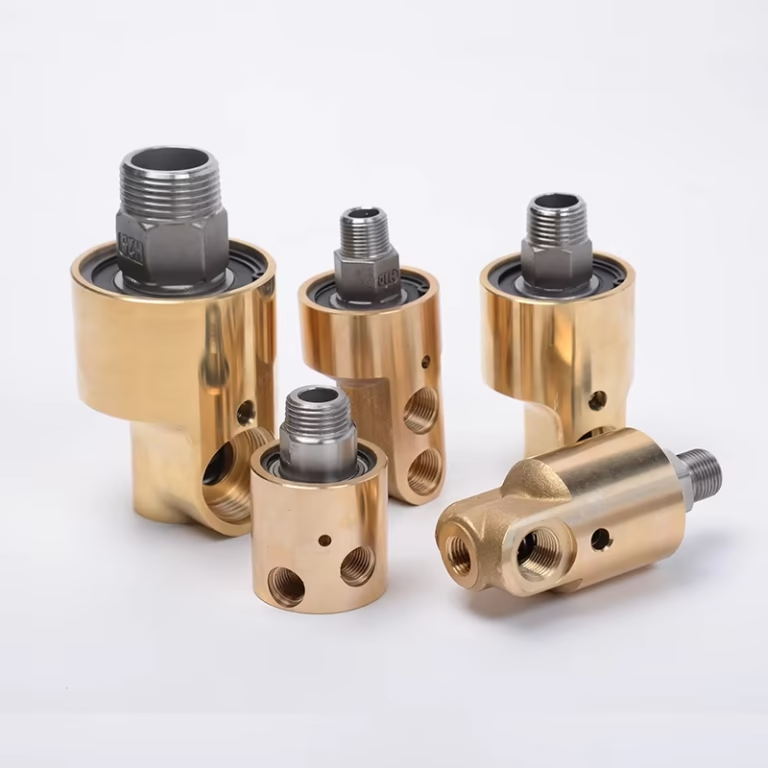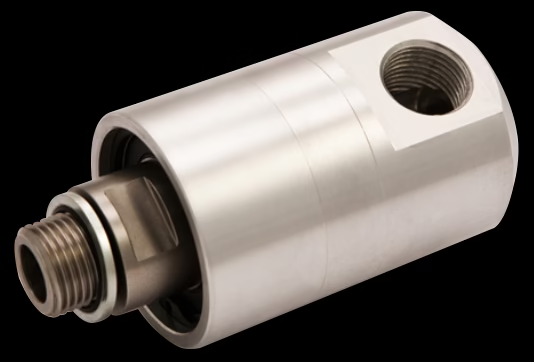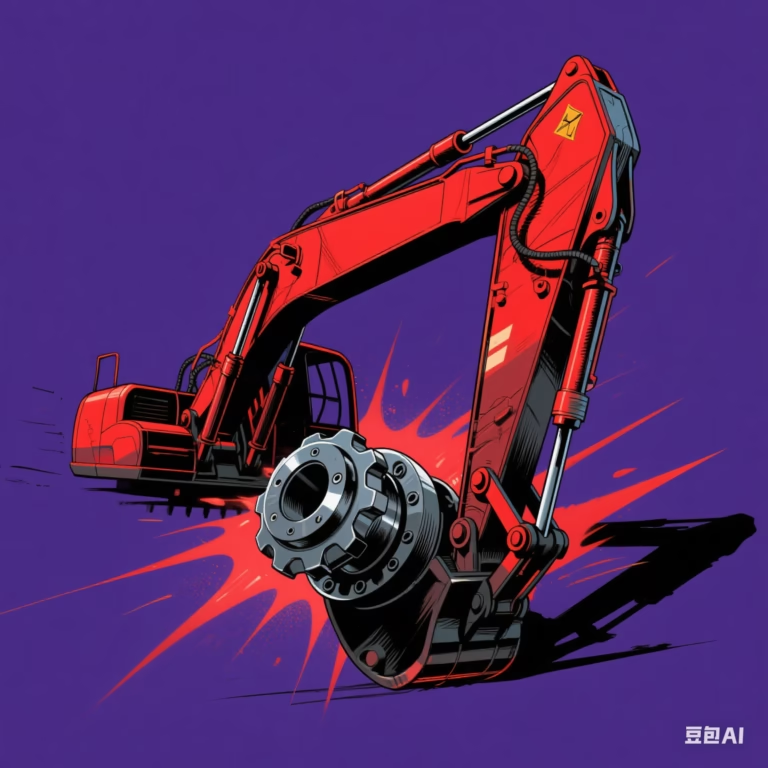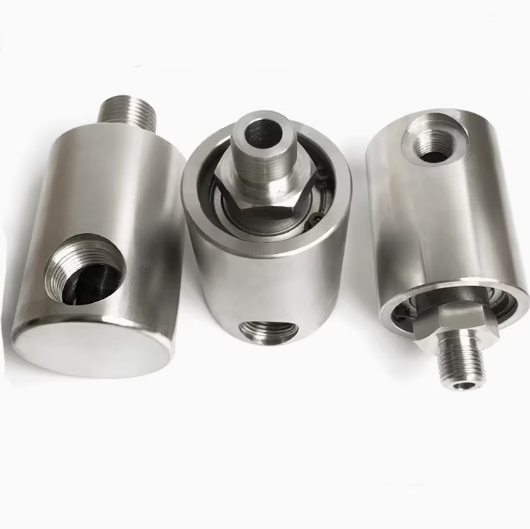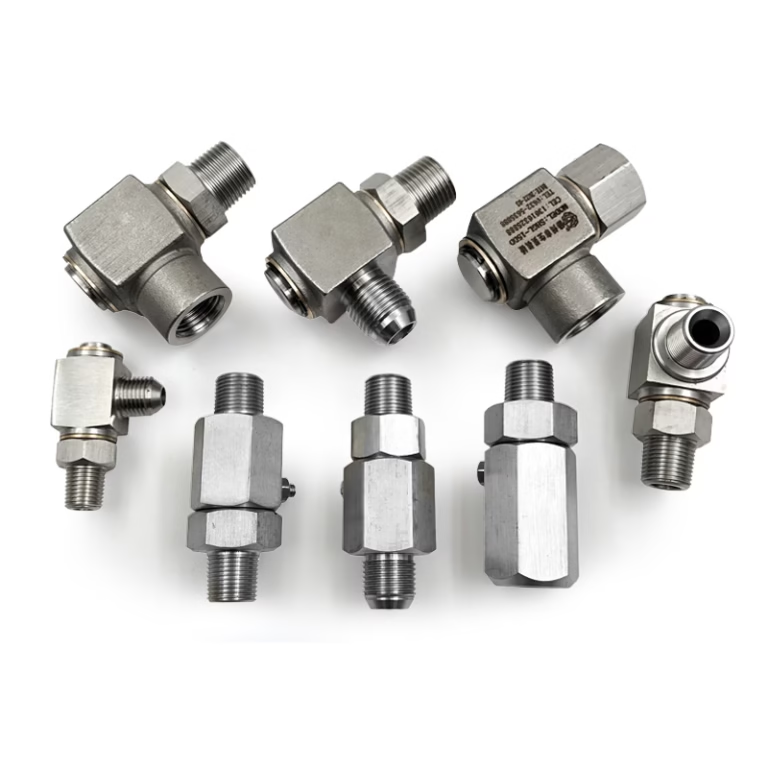What are popular hydraulic fitting types?
Introduction
In the intricate world of hydraulic systems, the significance of hydraulic fittings cannot be overstated. These unassuming components serve as the vital connectors that ensure seamless fluid flow, pressure containment, and system integrity. Whether you’re an engineer designing a high-performance hydraulic system, a maintenance professional troubleshooting issues, or simply someone curious about the mechanics of hydraulics, understanding the popular hydraulic fitting types is essential. In this blog post, we’ll take an in-depth look at the most common hydraulic fittings, their characteristics, applications, and benefits.
Why Hydraulic Fittings Matter
Hydraulic systems rely on pressurized fluid to transmit force. Fittings connect hoses, tubes, and valves, creating leak-free pathways. A single faulty fitting can lead to system failure, safety hazards, or costly downtime. With the global hydraulic equipment market expected to reach $50 billion by 2027, the demand for reliable fittings grows steadily.
Common Hydraulic Fitting Types
Threaded Fittings
Threaded fittings are the workhorses of hydraulic systems, using screw-like threads to create connections. They come in two primary styles:
NPT (National Pipe Tapered):
Common in North America, NPT fittings use tapered threads that seal as they tighten. Ideal for low-pressure applications like lubrication lines.
BSPP/BSPT (British Standard Pipe Parallel/Tapered):
Popular in Europe and Asia, BSPP has parallel threads and requires a seal (O-ring or washer). While BSPT uses tapered threads similar to NPT.
Pro Tip: Avoid mixing NPT and BSPT threads—mismatched angles cause leaks.
Flange Fittings
Flange fittings use bolted flanges to connect components, offering high durability for heavy-duty applications:
Code 61/62 Flanges:
Code 61 (3000 PSI) and Code 62 (6000 PSI) flanges dominate industrial settings. Their split-flange design simplifies hose replacement without disassembling the system.
SAE Flanges:
Standardized by the Society of Automotive Engineers, these flanges suit mobile equipment like excavators and loaders.
Application: Flange fittings excel in high-vibration environments, such as off-road machinery.
Compression Fittings
Compression fittings are among the most widely used hydraulic fitting types. Their popularity stems from their ease of installation and reliable performance. These fittings work by compressing a ferrule (usually made of brass or stainless steel) onto the tube or pipe when you tighten the nut. This compression creates a leak-proof seal, making them suitable for a variety of hydraulic applications.
One of the key advantages of compression fittings is that you can install them without special tools in many cases. A simple wrench suffices to tighten the nut and achieve the proper compression. This makes them a convenient choice for field repairs and installations where access to specialized equipment might be limited.
Compression fittings are available in different materials, such as carbon steel, stainless steel, and brass. Stainless steel compression fittings, for example, offer excellent corrosion resistance. Making them ideal for applications in harsh environments like marine or offshore hydraulic systems. Brass compression fittings, on the other hand. They are often used in less corrosive settings due to their lower cost and good mechanical properties.
These fittings are commonly used in low – to medium-pressure hydraulic systems, typically up to around 3000 psi. They are found in a wide range of applications, from industrial machinery and automotive hydraulic systems to small-scale hydraulic equipment. However, it’s important to note that improper installation of compression fittings can lead to leaks. Ensuring the correct tube size, proper tightening torque, and clean tube ends is crucial for a successful installation.
Flare Fittings
Flare fittings have been a staple in hydraulic systems for a long time. And their popularity endures due to their robust design and reliable sealing capabilities. The principle behind flare fittings is to create a conical flare on the end of the tube. Which then mates with a corresponding flare-shaped seat in the fitting body. When you tighten the nut, it presses the flared tube end against the seat, forming a tight seal.
There are two main types of flare fittings: single-flare and double-flare. Single-flare fittings are simpler to fabricate and install. But double-flare fittings offer enhanced sealing performance and greater resistance to vibration and pressure fluctuations. Double-flaring involves creating an additional step in the flaring process, which results in a more durable and reliable seal.
Flare fittings are often made from materials like steel, stainless steel, and aluminum. Steel flare fittings are commonly used in industrial hydraulic systems where high strength and durability are required. Stainless steel flare fittings, similar to compression fittings of the same material, provide excellent corrosion resistance, making them suitable for applications in corrosive environments. Aluminum flare fittings are lightweight, which makes them a good choice for mobile hydraulic systems in vehicles such as aircraft and trucks, where weight reduction is a priority.
These fittings can handle medium to high-pressure applications, typically up to 6000 psi or more, depending on the material and design. Flare fittings are commonly used in hydraulic brake systems, fuel lines, and industrial hydraulic equipment. They are known for their ability to maintain a seal even under conditions of high vibration and shock, which makes them a reliable option for many demanding applications.
O-Ring Face Seal (ORFS) Fittings
O-Ring Face Seal fittings have gained significant popularity in modern hydraulic systems, especially in applications where high-pressure and high-reliability seals are essential. The design of ORFS fittings features an O-ring seated in a groove on the face of the fitting. When two ORFS fittings are mated and tightened, the O-ring compresses between the flat faces of the fittings, creating a highly effective seal.
One of the major advantages of ORFS fittings is their ability to provide a leak-free seal even at very high pressures, often exceeding 6000 psi. The use of O-rings, which are available in a variety of elastomeric materials, allows for customization based on the specific requirements of the hydraulic fluid and operating temperature. For example, nitrile O – O-rings are commonly used for petroleum-based hydraulic fluids, while fluorocarbon O-rings offer better resistance to high-temperature and aggressive fluids.
ORFS fittings are typically made from high-strength materials like carbon steel, stainless steel, and alloy steel. Stainless steel ORFS fittings are popular in applications where corrosion resistance is crucial, such as in food processing plants or chemical industries. Carbon steel and alloy steel ORFS fittings are often used in heavy-duty industrial applications where high strength and pressure-handling capabilities are required.
These fittings are relatively easy to install, as long as you follow the proper procedures. Ensuring that the mating surfaces are clean and free of debris, and using the correct O-ring size and material are key to achieving a reliable seal. ORFS fittings are commonly used in high-pressure hydraulic systems in construction equipment, mining machinery, and large-scale industrial plants.
Bite – Type Fittings
Bite-type fittings, also known as compression-ring or cutting-ring fittings, are designed to create a secure and leak-proof connection by biting into the outer surface of the tube. When you tighten the nut on a bite-type fitting, the cutting rings (usually two rings) are forced into the tube, forming a mechanical and fluid-tight seal.
The unique design of bite-type fittings allows them to provide a reliable seal even in high-vibration and high-pressure applications. They are often used in applications where traditional compression fittings might not be sufficient, such as in aircraft hydraulic systems and high-performance industrial machinery.
Bite-type fittings are available in materials like stainless steel, carbon steel, and brass. Stainless steel bite-type fittings are particularly popular in applications where corrosion resistance and high strength are both important, such as in offshore oil and gas platforms. Carbon steel bite-type fittings offer good strength at a relatively lower cost, making them suitable for many general industrial applications.
Installation of bite-type fittings requires some care. The tube needs to be clean, straight, and of the correct size. Special tools are often recommended to ensure proper tightening and to achieve the optimal bite on the tube. While the installation process might be a bit more involved compared to some other fittings, the resulting seal is highly reliable and can withstand harsh operating conditions.
Welded Fittings
Welded fittings provide a permanent and extremely strong connection in hydraulic systems. As the name implies, these fittings are attached to the tube or pipe by welding. Welding creates a seamless bond between the fitting and the tubing, which offers excellent pressure-containment capabilities and resistance to vibration and mechanical stress.
There are different welding techniques used for hydraulic fittings, such as TIG (Tungsten Inert Gas) welding and MIG (Metal Inert Gas) welding. TIG welding is often preferred for its precision and ability to produce high-quality, clean welds, especially when working with stainless steel and other high-quality metals. MIG welding, on the other hand, is faster and more suitable for mass production and applications where speed is a priority.
Welded fittings are commonly made from materials like carbon steel, stainless steel, and alloy steel. Stainless steel welded fittings are widely used in applications where hygiene and corrosion resistance are important, such as in the pharmaceutical and food industries. Carbon steel welded fittings are used in heavy-duty industrial applications where high strength and durability are required, such as in large-scale manufacturing plants and construction equipment.
The main advantage of welded fittings is their strength and leak-proof nature. Once properly welded, they form a connection that can withstand very high pressures and harsh operating conditions. However, the installation of welded fittings requires skilled welders and proper welding equipment. Additionally, any repairs or modifications to a system with welded fittings can be more challenging compared to other types of fittings.
Quick-Connect Fittings
Quick-connect fittings have revolutionized the way hydraulic systems are assembled, disassembled, and maintained. These fittings allow for rapid connection and disconnection of hydraulic lines without the need for tools, making them extremely convenient for applications where frequent changes or maintenance are required.
Quick-connect fittings typically consist of a male and a female part. When the two parts are pushed together, a series of internal valves and seals engage, creating a fluid-tight connection. To disconnect, you simply operate a release mechanism, which opens the valves and allows the parts to separate.
There are different types of quick-connect fittings, such as ball-lock and poppet-style fittings. Ball-lock quick-connect fittings use balls that lock into grooves on the mating part to create a secure connection. Poppet-style fittings use a poppet valve mechanism to control fluid flow and seal the connection.
Quick-connect fittings are made from materials like stainless steel, brass, and aluminum. Stainless steel quick-connect fittings are popular in applications where corrosion resistance and high-pressure handling are important, such as in industrial hydraulic systems. Brass quick-connect fittings are often used in less demanding applications due to their lower cost.
Aluminum quick-connect fittings are lightweight and are commonly used in mobile hydraulic systems.
These fittings are widely used in applications such as construction equipment, where operators need to quickly attach and detach hydraulic attachments, and in automotive maintenance, where quick-connect fittings are used for oil changes and other fluid-related tasks. They save time and increase the efficiency of hydraulic system operation and maintenance.
Maintenance Best Practices
Regular Inspection: Check for leaks, corrosion, or thread damage weekly.
Torque Specifications: Over-tightening can deform fittings; use torque wrenches.
Fluid Compatibility: Ensure fittings resist the hydraulic fluid (e.g., phosphate ester fluids require specialized coatings).
Replacement Schedule: Replace fittings every 3-5 years in high-wear systems.
The Future of Hydraulic Fittings
Innovations are reshaping the industry:
Eco-Friendly Coatings: Zinc-nickel plating reduces environmental impact vs. traditional cadmium.
Smart Fittings: Embedded sensors monitor pressure and temperature in real-time.
3D-Printed Fittings: Custom geometries reduce weight and assembly time.
In conclusion
The world of hydraulic fittings is diverse, with each type offering unique advantages and being suitable for different applications. Compression fittings provide easy installation for low – to medium-pressure systems, flare fittings offer reliable sealing in various environments, O-Ring Face Seal fittings excel in high-pressure applications, bite-type fittings are ideal for high-vibration scenarios, welded fittings provide permanent and strong connections, and quick-connect fittings offer convenience for frequent assembly and disassembly.
Understanding the characteristics and applications of these popular hydraulic fitting types is crucial for designing, maintaining, and troubleshooting hydraulic systems effectively. Whether you’re working on a small-scale hydraulic project or a large-scale industrial system, choosing the right fitting type can make all the difference in ensuring optimal performance and reliability.


